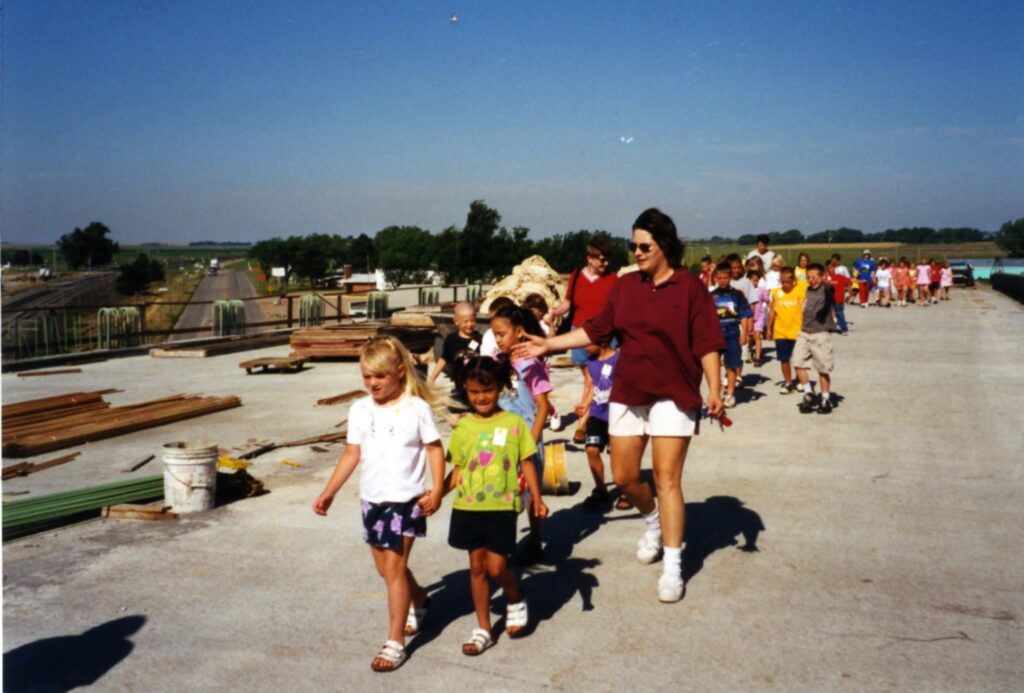The vote to change Hwy 50S from 8th St. to 10th St. secured the construction of a railroad overpass in Kinsley. The state would pay for the rerouting of 50S and a new Arkansas River bridge being constructed east of Kinsley. The federal government would pay for the overpass. The city would only be responsible for securing the rights of way along 10th St.
H. J. Taylor Construction Co. of Salina was awarded the contracts for 10th St. and the overpass construction. The work was begun in June 1936.
The Hwy 50S bridge over the Arkansas River had been built in 1907 southeast of Kinsley, just east of 110 Ave. and north of M Rd. It was decided to straightened Hwy 50S and build a new bridge in its present location. The new route and bridge would not be completed until 1943. Many people in Kinsley still have memories of the old bridge. Kenny Dupree remembers tearing it down in about 1967 and using it to build three other bridges.
In 1935, 10th St. was unpaved and only went from Clute Ave. on the east side of Kinsley to Massachusetts St. on the west side. Coon Creek had a north running horseshoe bend at Clute Ave., curving back south at MIlner St. A straight channel was dug across to keep the creek south of the extended 10th St./Hwy 50S. A new timber bridge was then built over Briggs Ave.
Another place the creek was straightened was at Niles Ave. where the existing bridge was moved 100 feet south to a new channel. A new steel bridge was built at Colony to replace two big drainage tubes. These creek and bridge improvements would help prevent flooding.
By the middle of September 1936, the approaches to the overpass and the timber pilings for it were finished. The west approach rose 3’ for every 100’. The east approach was built shorter and steeper so that as few homes as possible would be hidden by the grade which rose 5’ for every 100’. A short section of old 10th St. was kept running below and parallel to the overpass to give property owners a way out to Hwy 50S.
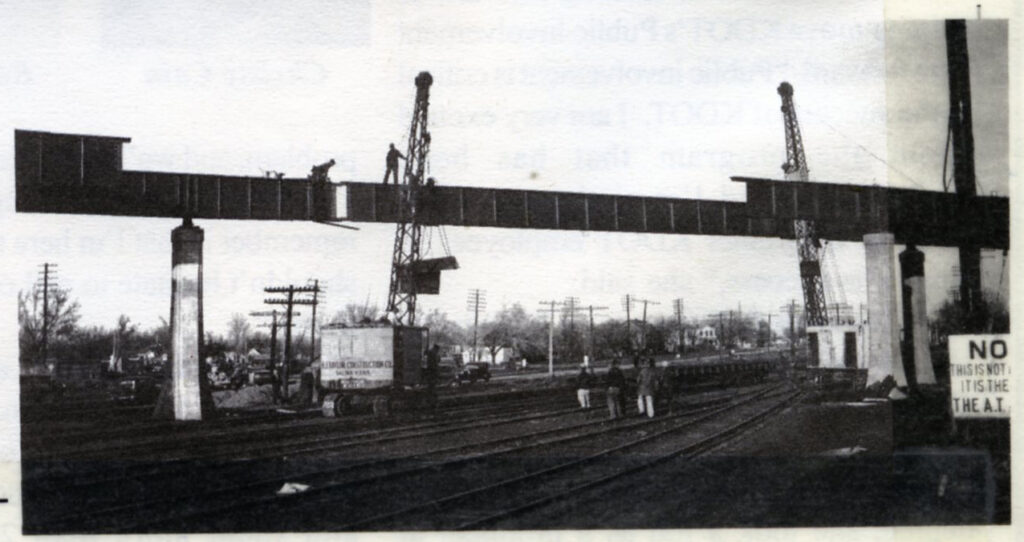
The steel work for the overpass was done during December. The July 27, 2000 issue of the Edwards County Sentinel reported an interview with DeVere McClaren whose first job after graduating from Centerville High School was working mainly as a crane operator on the overpass. He described another job that would have scared many men to going back on relief.
“…in construction you get to do a little bit of everything from time to time. I even had to puddle the cement once. I didn’t like that job at all. See, each pier has a steel rod frame which we built on the ground. The frames were lifted up into place and wired in. Then a wood frame was built around them with a hole in the top big enough for a man to get through. You went own inside the frame and a 2-foot tube was put in after you. The cement was poured in through that tube. It was dark and hot inside there and the only contact you had with the outside was to yell up through the hole. The man inside had to use a vibrator to keep shaking, or puddle, the cement so it spread out evenly.”
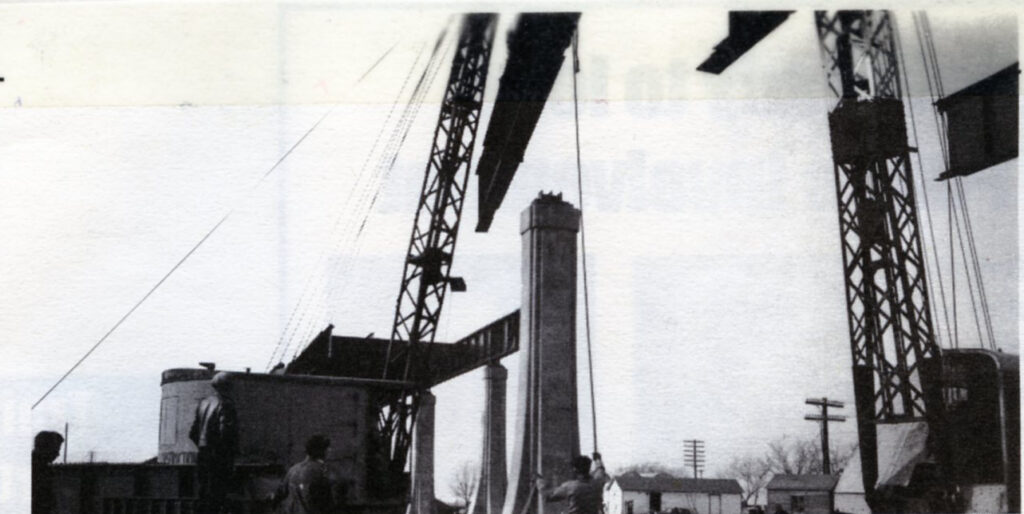
Many spectators were attracted to view the big machinery and construction. The Nov. 26th edition of the Mercury reported, “The tossing of red hot rivets to men perched on the frame work (of the overpass) always attracts a crowd.” I googled “tossing rivets” and found a video that showed men doing exactly that. One man would pick up a hot rivet from the fire with tongs and lob it up to the riveter who caught it in a bucket before removing it with tongs to use.
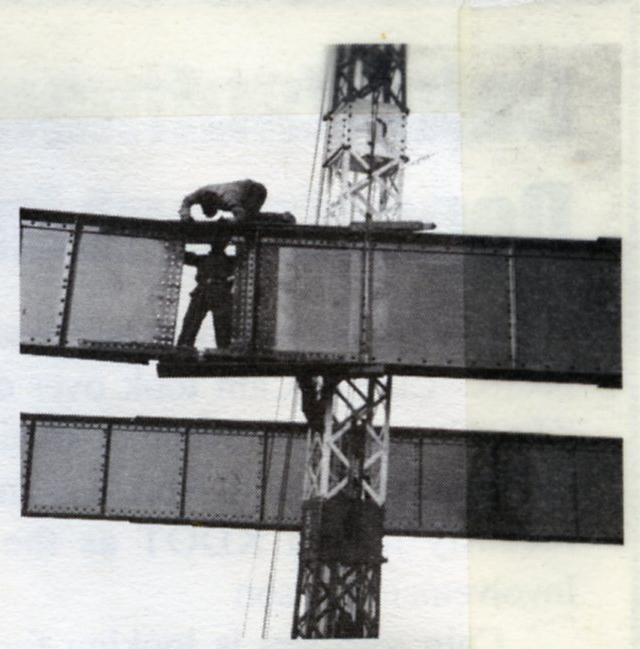
Seventy-two tons of steel, the biggest piece being 5’ across and 40’ long, was used in constructing the 485’ overpass. The steel work was finished by Christmas and then pouring the bridge flooring and building the side rails proceeded slowly as the 335 yards of concrete had to be poured in sections.
The overpass was given two coats of paint. The first coat was blue and the second coat aluminum. The underside of the overpass was painted black as the smoke from the trains would discolor anything else. A smoke screen was also placed under the steel girder as acid in smoke rusts steel.
The last thing to be done was constructing the road from the west end of the overpass to meet Hwy 56 (then Hwy 45). It was slowed by the relief truckers going on strike. They wanted more money for all the unpaid on-the-job hours they were required to stand by idly waiting for fill to be put in and packed.
The Mercury reported that the overpass was completed but not opened by April 22. “A number of cars have been driven over the structure the last few days although the approaches are still blockaded.” Makes me wonder which high school seniors dared to defy the barriers?
The Hwy 50S route and overpass were officially opened to traffic on July 20, 1937. A formal dedication was held on October 6. Governor Walter A. Huxman and many highway and government dignitaries attended. The day included highway tours, speeches and an orchestra concert in the KHS gymnasium, a luncheon with more speeches, and a program downtown by the KHS band and the drill team from St. Joseph College and Military Academy of Hays.
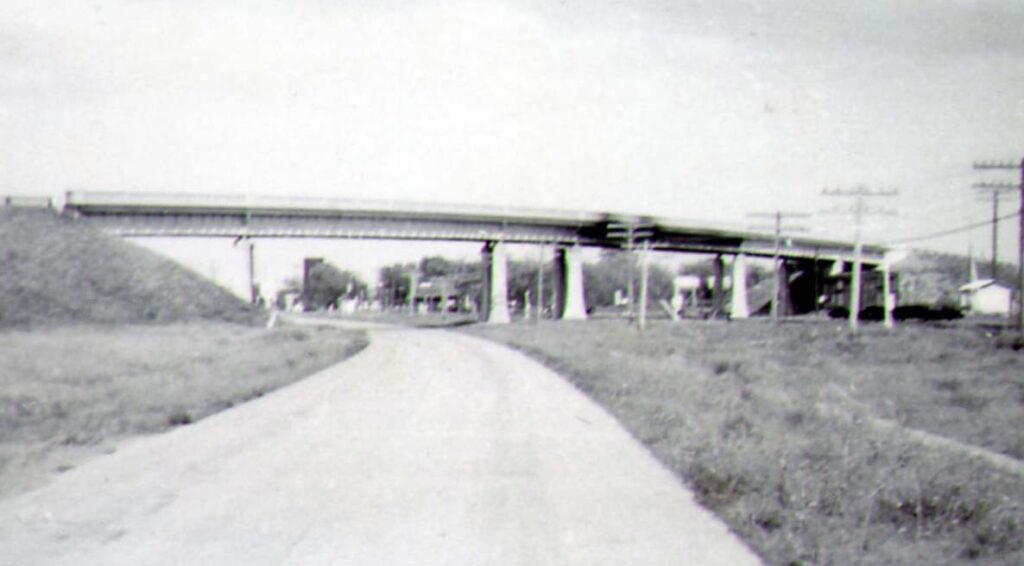
The Kinsley merchants also offered $125 in prizes to persons who found their telephone number displayed in the window of any of the 71 businesses You read that right – 71 businesses in 1937.
The total work on the three highways and overpass from June, 1936 to April, 1937 came to $213,640. Unskilled relief workers were paid 30 cents/hour up to skilled workers receiving $1.10/hour. About 140 to 200 men were employed daily with about 40% being relief workers. This overpass would remain until a new, wider one was built between 1999 and 2001.
